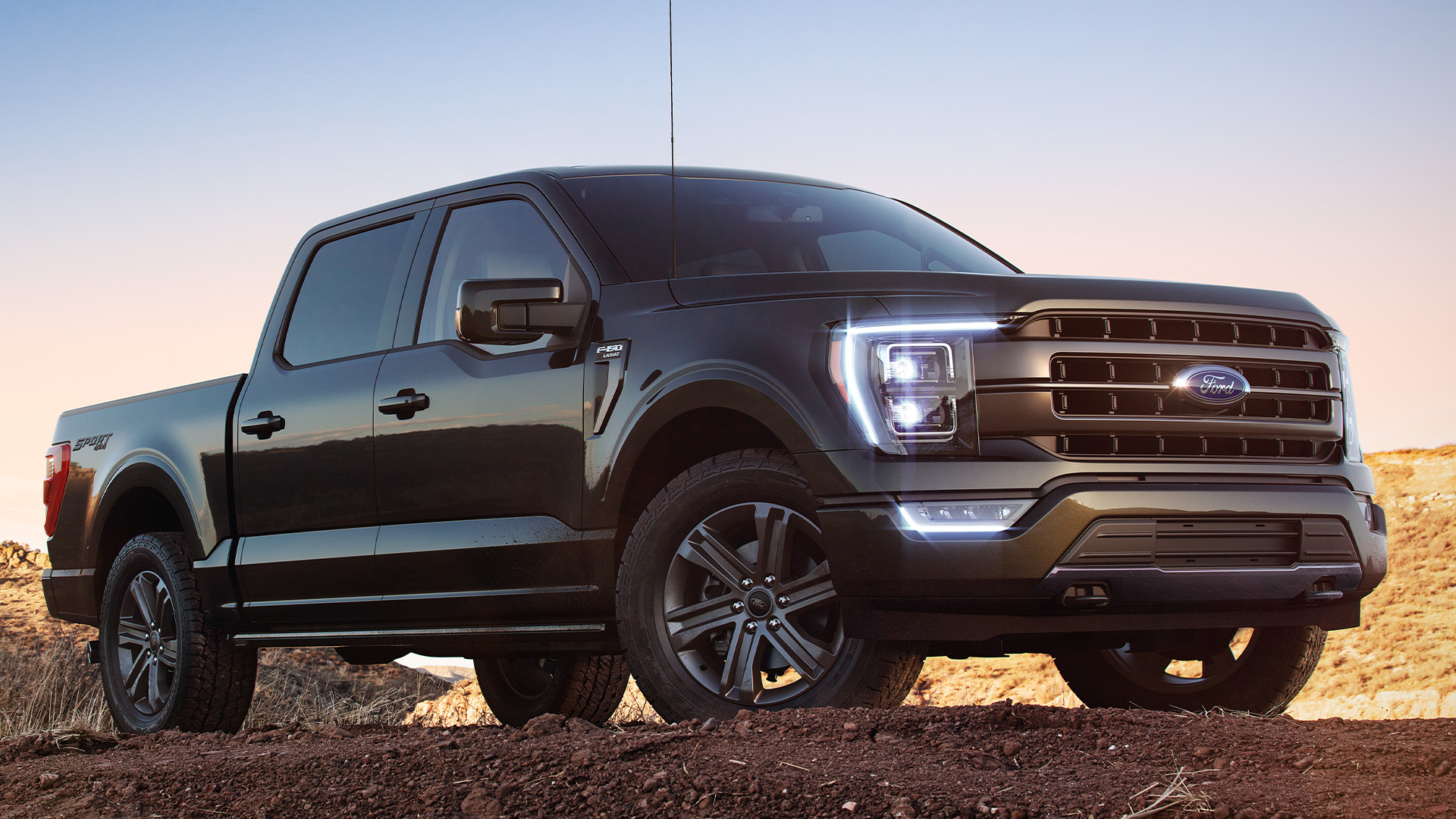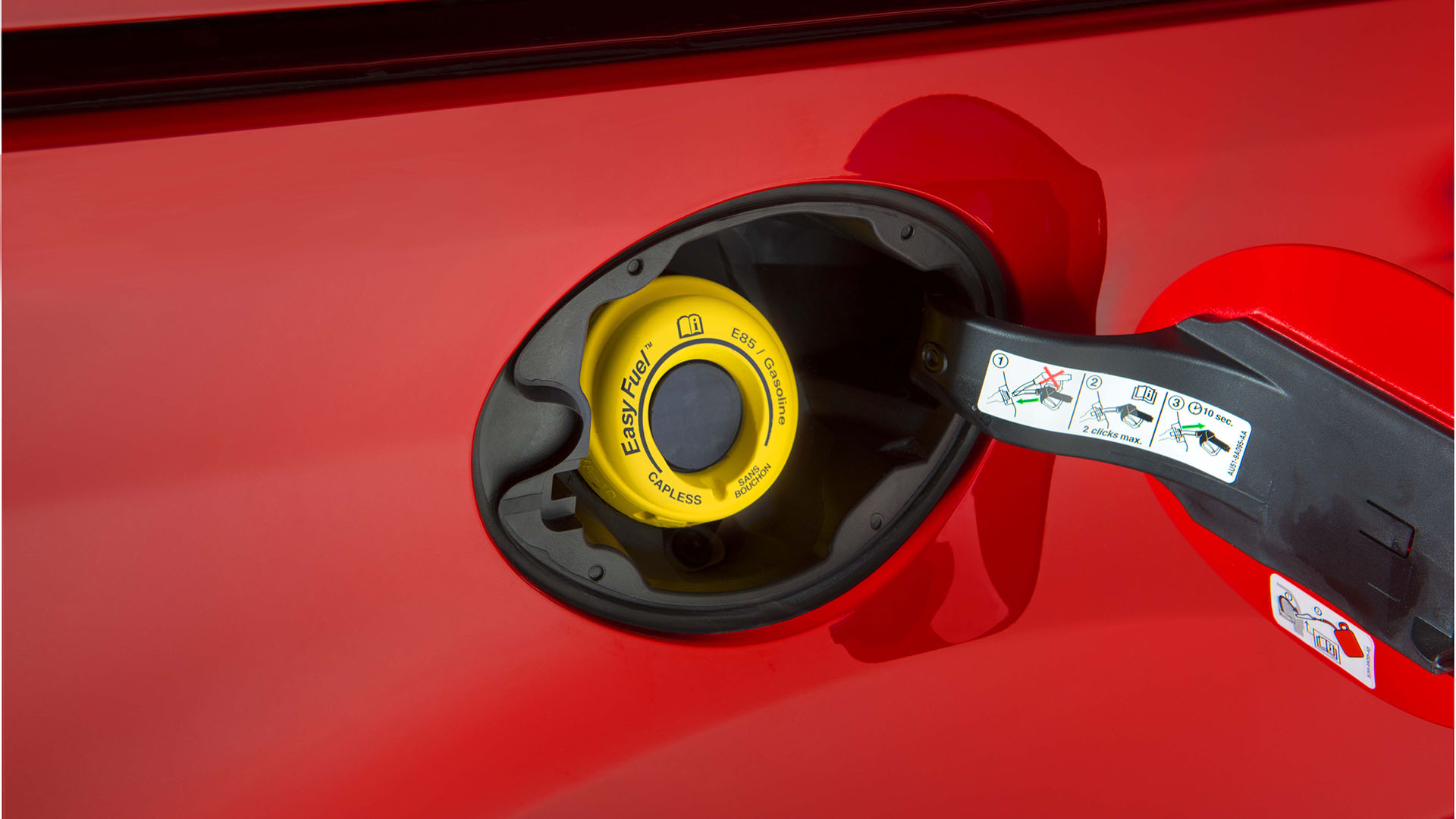

We may earn revenue from the products available on this page and participate in affiliate programs. Learn more ›
The future of the world depends on humans stopping, and hopefully reversing, the damage we’ve caused to Earth by mining and using fossil fuels. Innovators and scientists have scrambled for decades to find ways to reduce these fuels’ byproduct emissions. Alternative fuels have been proposed, but rarely do they come to market—except for E85 ethanol, also known as flex fuel.
While we’re not saving the world with it yet, E85 ethanol is a step towards a renewable fuel that can more easily replace gasoline. Cars capable of running E85 are called flex-fuel vehicles (FFV), and they have spread throughout the automotive industry during the past 20 years. Still, only some cars can run flex fuel, and while it burns cleaner and can provide more horsepower, there are some caveats.
What Is Flex Fuel?
Flex fuel is a mixture made of gasoline and between 51-83 percent ethanol. E85 can only be used in flex-fuel vehicles that have been specifically designed or converted to use this type of fuel. Flex fuel is named because of two things: Its flexible percentage of ethanol content, and because cars tuned to run flex fuel also adjust their engine control units to compensate for any mixture of ethanol.
What Is Ethanol?
Ethanol is clear grain alcohol harvested from starchy and sugary plants such as corn, sugarcane, sorghum, barley, and others. In the U.S., a majority of ethanol comes from corn fermentation. Ethanol is considered a renewable fuel because it is made from biomass, or plant matter, rather than fossil fuels.

Nearly all gasoline has some level of ethanol content, with the most commonly used types at the pump containing up to 10 percent ethanol. Ethanol has less energy density than gasoline, which means that E85 has a lot less energy—about 27% less per gallon than normal E10 gasoline. This means that you will get worse fuel economy than normal gasoline to make the same horsepower.
That is the catch with ethanol-based fuels, along with their corrosive properties. Vehicles that run pure E85 will see more fuel dilution in the engine oil, which will require more frequent oil changes. The fuel lines must be reinforced against ethanol as well. But the benefit is that E85 is generally a lot cheaper than gasoline, burns cleaner, and is much more renewable. And for the tuners, it has a higher octane rating than gasoline, allowing modified cars to make more power.

What Is a Flex Fuel Vehicle?
A flex fuel vehicle (FFV) is a vehicle that has been specifically designed to drive using E85 fuel. FFVs are similar to common gasoline vehicles, aside from a few altered parts, and many FFVs can optionally run on regular gasoline making them easier to live with day in and day out.
For example, the Ford F-150 is available with the 5.0-liter V8, which is a flex-fuel powertrain. To accommodate E85, flex-fuel F-150s have unique fuel lines with a nickel coating on the inside diameter of the lines. They also have higher volume fuel pumps and fuel delivery modules with aluminum rotors compared to composite rotors. Ethanol is especially harmful to untreated rubber lines, requiring reinforced lines like the F-150’s nickel or Teflon-coated lines.

How To Identify Flex Fuel Vehicles
Look for these three things to determine whether or not you have a flex-fuel vehicle.
- Badges on the exterior, or less often, interior
- A label on the inside of the fuel door
- A yellow fuel cap or yellow ring around the fuel filler.
Or, look in the car’s manual.

Why Flex Fuel Matters
Flex fuel is not new, but it is one of the very few options in alternative fuels that ever came to market and managed to stick around. It gives consumers more options in what they use to power their vehicles, whether that’s because you’re environmentally conscious or just looking for cheaper fuel it’s good for everyone to have options. Of course, that lower cost comes with less fuel economy, so make your calculation around that 27% energy deficit.
While flex fuel won’t save the world, it’s another option to potentially reduce our footprint depending on how we farm and use it. But it’s an option, and it could make a difference.
Flex Fuel FAQs
Can You Use Regular Gas In a Flex Fuel Vehicle?
Most FFVs can run regular gasoline but always read the vehicle manual to double-check.
What Is the Benefit Of a Flex Fuel Vehicle?
The main benefit of a flex fuel vehicle is that a majority of its content comes from a renewable source. A secondary benefit is a slight increase in torque. The Oak Ridge National Laboratory details more on the results of E85 usage in its report, “Effects of High Octane Ethanol Blends on Four Legacy Flex Fuel Vehicles and a turbocharged GDI engine.”
Is Flex Fuel Good or Bad?
Good or bad is subjective, but flex-fuel vehicles fit some lifestyles and not others.
Can You Use Flex Fuel In a Regular Gas Vehicle?
Regardless of whether or not it’s possible, we do not recommend using E85 in vehicles that have not been designed to run on E85. Should you accidentally fill your car with E85, repeatedly top it off with regular gas throughout the next tank or remove it with a fuel transfer pump.
